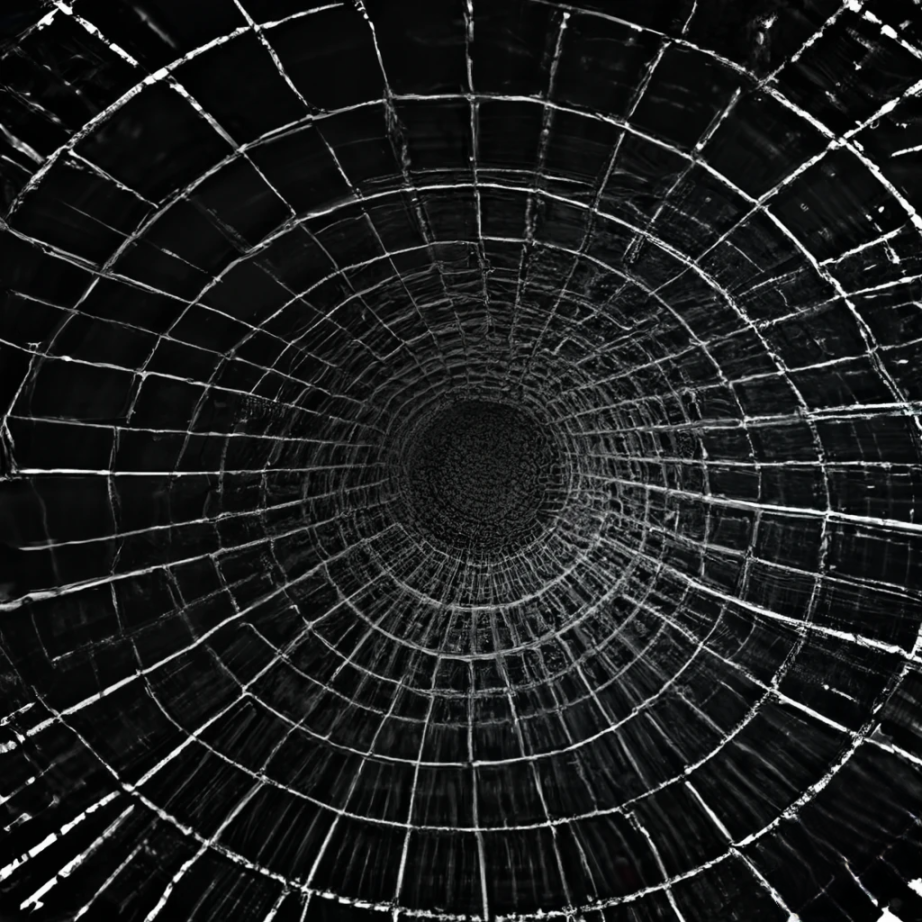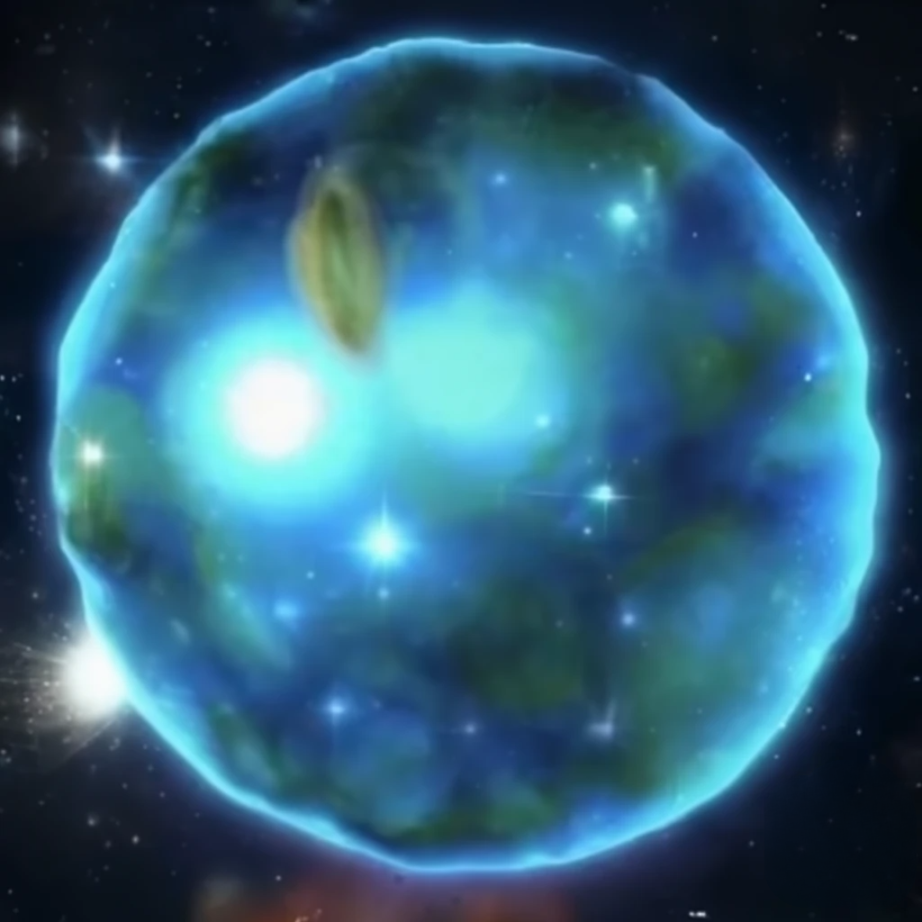A Quantum Gravity problem: Exploring a Continous Early Universe?
The Singularity Role in Cosmological Research
The Big Bang Singularity (Figure 1) poses a significant challenge within standard cosmological and Inflationary Theory(ies). The divergence of Tensors in the Einstein Equations near the singularity suggests that classical General Relativity may not be applicable under such extreme conditions. Quantum Gravitational Effects likely become relevant in proximity to the singularity, prompting the exploration of quantum theories of Gravity. Various approaches, including String Theory [1] and Loop Quantum Gravity [2], have been pursued to address this issue. A quantum theory of gravity emerges from the unification of General Relativity and Quantum Mechanics, potentially introducing a fundamental minimal length and a non-zero minimal Uncertainty in position measurements.
Fundation of Quantum World
To extend the Uncertainty Principle (Equation 1) and incorporate a non-zero minimal uncertainty, [math]\normalsize{x_{0}}[/math] in Position, [math]\normalsize{x}[/math] the Commutation relation between Position ([math]\normalsize{\hat{X}}[/math]) and Linear Momentum ([math]\normalsize{\hat{P}}[/math]) Operators is modified. This modification yields a generalized uncertainty relation, leading to novel consequences in the Statistical Mechanics of free particle systems.
Equation 1. Classical Heinsenberg Uncertainty Principle expression
in which [math]\normalsize{\Delta{x}}[/math] and [math]\normalsize{\Delta{p}}[/math] are, in the order, the Position and Linear Momentum Operators uncertainties; while [math]\normalsize{\hbar}[/math] is the reduced Planck Constant.
For instance, the Phase Space measure is adjusted accordingly for particles
adhering to the generalized uncertainty principle.
Several such generalizations exist, each with its own characteristics. For instance, the Kempf - Mangano - Mann (K.M.M.) [3] Deformation Commutation relation is represented as:
Equation 2. Kempf - Mangano - Mann Commutation relation
Equation 3. Maggiore's Generalized Commutation relation
where [math]\normalsize{\lambda}[/math] denotes an extremely small Length Parameter; [math]\normalsize{m}[/math] is the Mass and [math]\normalsize{c}[/math] is the Light Speed.
Both commutation relations yield the
generalized uncertainty relation,
Equation 4. Maggiore's and K.M.M. Commutation Relations combination
with the second relation
converging to this form in a suitable limit. A three-dimensional extension preserving rotational
symmetry is proposed, leading to noncommutative geometry.
The Statistical Approach
The Statistical Mechanics of free ultra-relativistic particles subject to the Kempf-Mangano-Mann deformation are investigated within the Grand Canonical Ensemble approach. In traditional
quantum statistical mechanics, where the parameter [math]\normalsize{\lambda}[/math] equals zero, the Heisenberg Uncertainty
Principle partitions phase space into cells of volume [math]\normalsize{h^3}[/math], with [math]\normalsize{h}[/math] representing the Planck constant. Calculating the Grand Canonical Partition Function1 for a non-relativistic Ideal Gas2 in conventional
quantum mechanics involves rewriting the sum over one-particle states in terms of integrals.
In the high energy - temperature limit, characterized by negligible particle mass and inter - particle
forces, particles behave akin to free ultra-relativistic particles, obeying Maxwell - Boltzmann Statistics.
Consequently, the grand canonical partition function takes the following form
Equation 5. Grand Canonical Partition Function at High Energy - Temperature conditions
Contrary to conventional quantum statistical mechanics, this analysis reveals that the entropy and internal energy of the system attain finite values as temperature approaches infinity. Furthermore, the possibility of negative temperatures and pressures in such systems is explored, elucidating differences from Spin systems.

Figure 1. A geometric horizontal Section of a Space - Time Fabric (white grid-like lattice) deformation with a Singularity (black part at the bottom)
No more Big Bang Singularities
The modified Equations of State due to the generalized uncertainty principle are considered in the context of the early Universe dynamics [5] (Figure 2). Additionally, the study suggests that negative temperatures may lead to alternative solutions for the Friedmann Equations (Equation 6), potentially altering the history of the Universe [6]. It is proposed that these modifications alone can potentially resolve the big bang singularity by ensuring a constant Entropy, thus avoiding singularities in the dynamical equations. This relation implies constant entropy, consistent with Reversibility assumptions [7].
Equation 6. The two (a and b label) Friedmann Equations
[math]\Large{a}[/math] is a scalar factor (single and double upper dots represent, in the order, the first and second derivatives with respect to proper time); [math]\Large{\rho}[/math] is the Mass Density of Universe and [math]\Large{P}[/math] is the Pressure.
Substituting the equations of state in the Friedmann equations, it leads to following result.
Equation 7. The reformuled Friedmann Equation
Importantly, the minimum scale
factor is greater than zero, contrary to conventional cases. The singularity occurs at infinite
temperature or [math]\normalsize{x = 0}[/math], but the term [math]\normalsize{a^3}[/math] does not tend to zero as [math]\normalsize{x \rightarrow 0}[/math], indicating finite
Entropy at [math]\normalsize{x = 0}[/math], a non-trivial consequence of the minimal uncertainty principle.

Figure 2. Pictorial representation of a Growing Newborn Universe
A very Important Principle
So the potential of the generalized uncertainty principle to address
fundamental cosmological singularities, such as the big bang singularity, has been highlighted. By integrating this principle
into the statistical mechanics of particle systems and considering its implications for the early universe,
novel insights into the nature of Space - Time and the dynamics of cosmic evolution emerge. Further
exploration of these concepts promises to deepen our understanding of the fundamental nature of
the Universe.
- American Scientist. "Is String Theory Even Wrong?"https://www.americanscientist.org/article/is-string-theory-even-wrong
- Nature. "Experimental simulation of loop quantum gravity on a photonic chip" https://www.nature.com/articles/s41534-023-00702-y
- ResearchForLife7 (revisited from arXiv). "K.M.M. Overview on Minimal Uncertainty Length" https://httpsresearchforlife7.com/wp-content/uploads/2024/03/K.M.M.-Overview-on-Minimal-Uncertainty-Length.pdf
- ResearchForLife7 (revisited from ScienceDirect). "A Depth on the Maggiore's Commutation Relations" https://httpsresearchforlife7.com/wp-content/uploads/2024/03/A-Depth-on-the-Maggiore-s-Commutation-Relations.pdf
- IOPscience. "Critical dynamics in the early universe" https://iopscience.iop.org/article/10.1088/0264-9381/10/S/009
- Scientific American. "Origin of the Universe" https://www.jstor.org/stable/26001524
- ResearchGate. "Time Reversibility and the Logical Structure of the Universe " https://www.researchgate.net/publication/236616749_Time_Reversibility_and_the_Logical_Structure_of_the_Universe